Right now, none of us is able to explore the far reaches of the UK – however much we might want to.
By a happy accident of timing though, we’ll get to watch chef James Martin do just that. Jealousy is guaranteed – but if we can’t escape to the huge, sandy shores of Northumberland, or the rugged Northern Irish coast ourselves, at least we can sit in front of the telly and soak up the digitised, Technicolor imagery of them, and imagine ourselves sat on a rocky outcrop, cooking up a plateful of mussels with Martin.
The restaurateur and Saturday morning telly chef’s latest series and accompanying cookbook, James Martin’s Islands To Highlands, sees him track up and down the UK, from the microclimates of the Channel Islands (for Jersey Royal potato season) to the game-filled landscapes of Scotland.
“We do take it for granted,” says Martin, 47, speaking several weeks before the coronavirus pandemic broke. “I don’t think we appreciate what’s on our doorstep.”
During a nine-month spell of travelling, he and his crew got to experience sights you just might not expect of Britain; like the Isles of Scilly – “20 miles off the coast of Cornwall but the beaches are the colour of chalk, it’s just incredible” – and the astounding Shetland archipelago.
“Shetland is like being born with new eyes, it sounds really weird, but the colours, the clarity of what you see is surprising,” says Martin, trying to grasp the words to do it justice. “There’s no pollution there for sure, but it’s the clarity of everything, you do feel as though you’ve been reborn with new eyes – that’s all I can describe it as.”
They also visit Puffin Island off the coast of Newcastle – “[There’s] over a quarter of a million puffins breeding on this island, and three quarters of a million seabirds – it’s bl**dy unbelievable seeing that” – and swim with seals off Scilly.
Martin admits to having felt a little “trepidation at first” when faced with the slick, hulking creatures. “You don’t realise how big seals are – there was a couple of hundred where we were swimming, and they come right up to you,” he remembers. “It’s fantastic, it’s one of those life-changing things you feel very privileged to do – to have even seen.”
Then there were the food producers he encountered along the way. Martin learnt about salted coley, called piltock, in Shetland (he really loved Shetland, can you tell?) used in fish cakes called ‘hairy tatties’: “The coley takes on the texture of hair, it’s quite cool.”
While in Northern Ireland he met kelp farmers on Rathlin Island, and a 14-year-old who’s one of the few producers of wasabi outside Japan, with help from his scientist dad. “Taste-wise, it’s amazing,” buzzes Martin. “You can buy it online and it all comes from this kid who had this idea, and literally produces it in his back garden. Brilliant.”
While Martin – a proper “farmer’s lad” who gets “a bit freaked out if I’m in a city for more than a couple of days” – is animated when talking about the landscapes, wildlife and producers he discovered, there’s a weariness that steals over him when talking about food culture and shopping habits in the UK (and this was before people began stockpiling).
“To fully understand food, you’ve got to appreciate how difficult it is to produce, and where it’s from, and then you’ll respect it a lot more, and respect the people who produce it,” he explains fervently. He also considers artisan farmer’s markets “gimmicky” and “a tourist attraction” when we ought to be buying from everyday markets like they do in Europe, or at least from local fishmongers, butchers and grocers.
Choice is another problem. “We don’t eat a variety, we eat too much convenience food, without a shadow of a doubt, but we don’t have the variety of what we should have,” says Martin. “We still get fobbed off with the same stuff.”
You have to demand different ingredients if you want to eat them he says, and while things are changing (“20 years ago, we wouldn’t have had galangal!”) there’s still much to be done. For instance, we eat a lot of cod, but what happens to the cod cheeks? “You’ve got to ask for them!”
Cost is an issue too. “We have this obsession with buying, dare I say it, cheaper and cheaper food,” says Martin, and unlike America and Europe, where produce is largely celebrated and beautifully displayed, “everything here is laid out on bloody plastic for convenience, and I don’t understand why. It’s not showing off the ingredients at their best, it’s just price sensitive and ease of purchase.”
He says it’s particularly frustrating when the produce in and around the UK really is spectacular, but so much is shipped abroad, like Dover sole (90% of sole fished in Hastings is shipped abroad), langoustines (98% sent elsewhere) and the eels hauled up at Loch Neagh. “All of those get exported to Holland – all of them! And it’s weird, you’ll be staying in northern Europe on your holiday and think, ‘Oh I’ll try this’, not realising it’s from right on your doorstep.”
Martin wants us to adopt that holiday feeling on a more daily basis, and approach dinner as a pleasure, not a financial corner to cut. “It’s one of the true enjoyments of life, that we all have to eat, all of us,” he says, noting how in France it’s the norm “to sit and enjoy a meal, have a conversation, eat bread and wine. When does that happen in the UK? It’s normally sat watching TV.”
Perhaps now we’re all stuck inside, we might spend more time around the dining table together instead. And if so, we can mainline Martin’s travels, and his feeling that “food is my life, I can’t see why people wouldn’t enjoy it.”
James Martin’s Islands To Highlands by James Martin, photography by Peter Cassidy, is published by Quadrille, priced £25. Available now.
Words by Ella Walker, PA
Photos by Quadrille/Peter Cassidy/PA
Shetland Paella, Serves 8
INGREDIENTS
- 50ml olive oil
- 6 boneless chicken thighs
- 2 onions, sliced
- 3 garlic cloves, crushed
- Small bunch of oregano, thyme and marjoram, chopped
- Sea salt and freshly ground black pepper
- 150g paella rice
- 5 vine tomatoes, quartered
- 4tsp smoked paprika
- 1 monkfish tail, cut into 2cm pieces
- 16 whole shell-on prawns
- 8 scallops
- 300g mussels, cleaned and debearded
- Small bunch of flat-leaf parsley, very finely chopped
METHOD
- Light your BBQ. When the coals are silvery in colour, it’s ready to cook on.
- Place a 30-cm paella pan directly onto the BBQ or over a medium heat. Pour in half of the oil and fry the chicken thighs until golden all over. Add the onions, garlic and herbs, season well, then scatter the rice over the top. Stir once to combine, add the tomatoes, pour over 500ml cold water, then sprinkle over the paprika. Gently stir everything together and simmer for 20 minutes. Season again, then add all the fish. Drizzle the remaining oil over the top, cover with foil and cook for a further 10 minutes.
- Remove the foil, discard any mussels that have not opened and sprinkle over the parsley just before serving.
Martin’s tip: Fresh mussels need to be alive before you cook them. To prepare them, pull off the stringy beards, knock off any barnacles and give the shells a scrub in fresh water to clean. Throw away ones with broken shells or any that don’t close tightly when you tap them.
PICTURED ABOVE: Shetland paella | Quadrille/Peter Cassidy/PA
Steak with Whisky-Braised Onions & Mustard Sauce, Serves 2
INGREDIENTS
- 4 onions, peeled
- 50ml whisky
- 600ml beef stock
- 100g salted butter
- 1 garlic clove, crushed
- A few pine sprigs, washed and patted dry
- 1–2tbsp olive oil
- Sea salt and freshly ground black pepper
- 400g rump steak, 5cm thick
- 150g long-stem broccoli
- For the sauce:
- 2tbsp Scottish grainy mustard
- ½tsp English mustard
- 2tbsp salted butter
- 25ml whisky
- 75ml double cream
METHOD
- If using, light your BBQ. When the coals are silvery in colour, it’s ready to cook on.
- Place the whole onions in a pan with the whisky and beef stock. Cover and bring to the boil then reduce the heat slightly and simmer for 40 minutes. Use a slotted spoon to lift the onions out of their cooking liquor and set aside to cool a little. Reserve the liquor.
- Meanwhile, place the butter, garlic and pine sprigs into a separate pan and place over a low heat to melt the butter.
- If not cooking on the BBQ, preheat a griddle pan over a high heat. Cut the onions in half horizontally, then drizzle over the oil and season well. Cook on the griddle pan or on the BBQ, flat-side down, for a couple of minutes until charred. Lift onto a plate and set aside.
- Season the steak all over, then brush with some of the melted pine butter. Cook on the hot griddle pan or on the BBQ for two minutes, then brush with more butter, flip over and cook for another two minutes. Add the long-stem broccoli to the pan or BBQ for the last two minutes of cooking, again brushing with pine butter. Lift the steak onto a board and rest for four minutes.
- To make the sauce, put both types of mustard in a pan with one tablespoon of the butter and 200ml of the reserved onion cooking liquor. Pour in the whisky, then flambé to burn off the alcohol, tipping the pan gently and carefully to ignite. Place over a medium heat and simmer until the liquid has reduced by half, then stir in the cream and season well. Whisk in the remaining one tablespoon of butter to finish.
- Slice the steak into 3cm thick slices and place on a platter with the broccoli, then spoon over the sauce. Pull the onions into petals and dot around before serving.
PICTURED ABOVE: Steak with whiskey onions | Quadrille/Peter Cassidy/PA
Millionaire’s Shortbread, Makes 12
INGREDIENTS
For the biscuit base:
- 300g salted butter, softened
- 200g dark soft brown sugar
- 350g plain flour
- 125g cornflour
- For the caramel filling:
- 1 x 397g jar dulce de leche
- 250g salted butter
- 150g caster sugar
For the topping:
- 400g dark chocolate (70% cocoa solids), broken into pieces
- 100g salted butter
METHOD
- Preheat the oven to 170°C (150°C fan)/325°F/gas 3.
- To make the biscuit base, put the butter, sugar and both types of flour into a large bowl. Use your fingertips to rub the butter into the other ingredients until the mixture looks really crumbly. Press the mixture into a 23 x 30cm loose-bottomed cake tin (no need to line) and use a palette knife to even out the surface. Bake for 20 minutes, then remove from the oven and cool in the tin on a wire rack.
- To make the caramel filling, combine the dulce de leche, butter and sugar in a large saucepan over a medium heat. Whisking the mixture, bring to the boil (be careful as the mixture will be extremely hot).
- Pour evenly over the biscuit base, cover and leave to set for at least four hours or overnight at room temperature.
- To make the topping, put the chocolate and butter into a medium heavy-based pan and gently heat. Once everything has melted, whisk to combine. Cool slightly, then pour over the caramel and level with a palette knife. Cover, then leave to set overnight at room temperature.
- Cut into 12 squares to serve.
James Martin’s Islands To Highlands by James Martin, photography by Peter Cassidy, is published by Quadrille, priced £25. Available now.
PICTURED ABOVE: Millionaire’s Shortbread | Quadrille/Peter Cassidy/PA
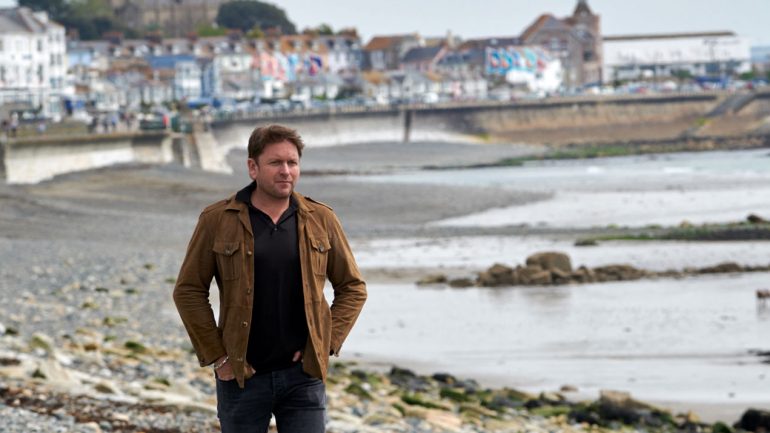
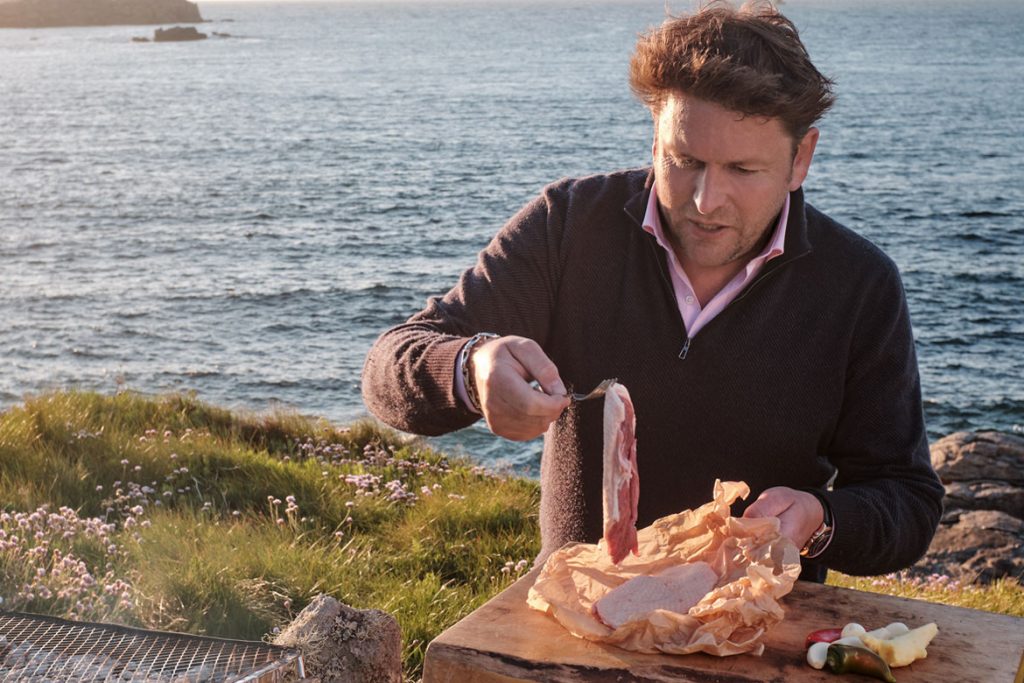
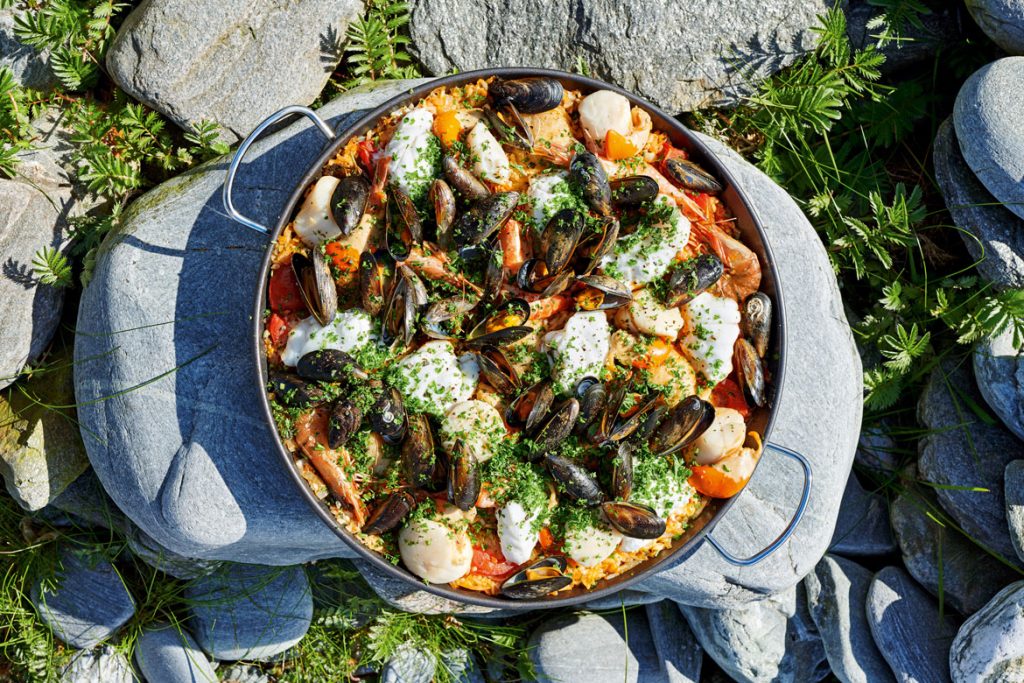
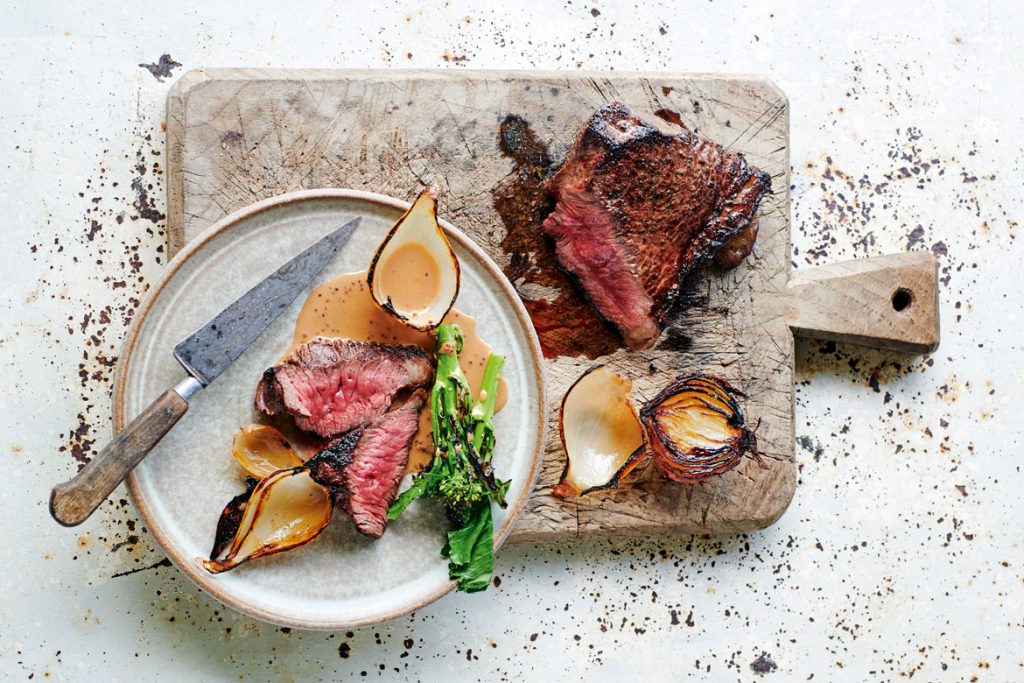
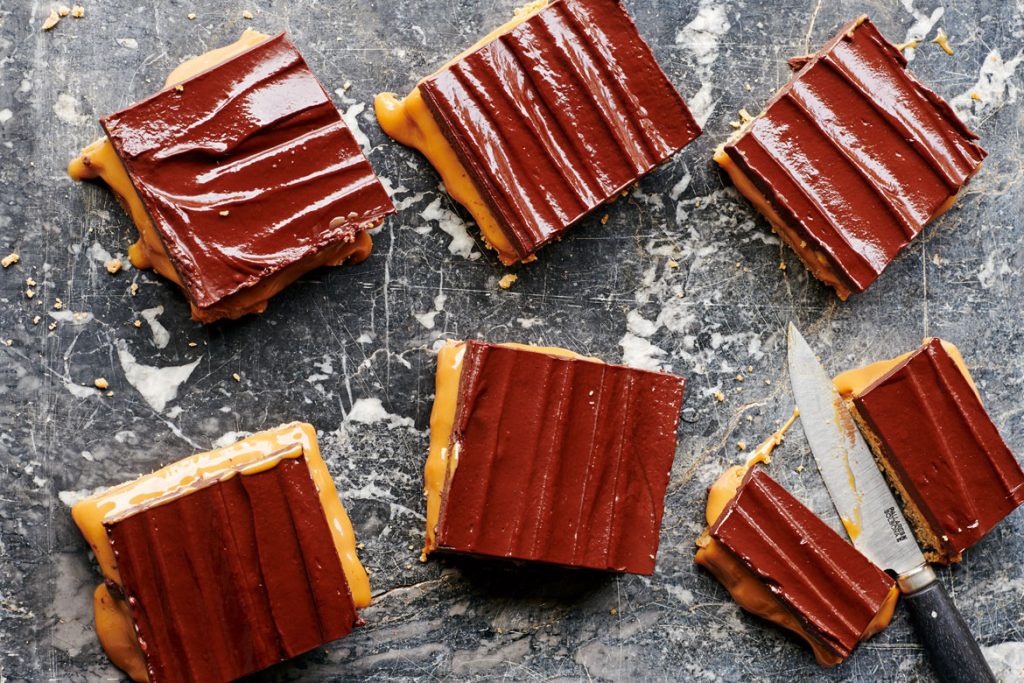

Leave a Reply